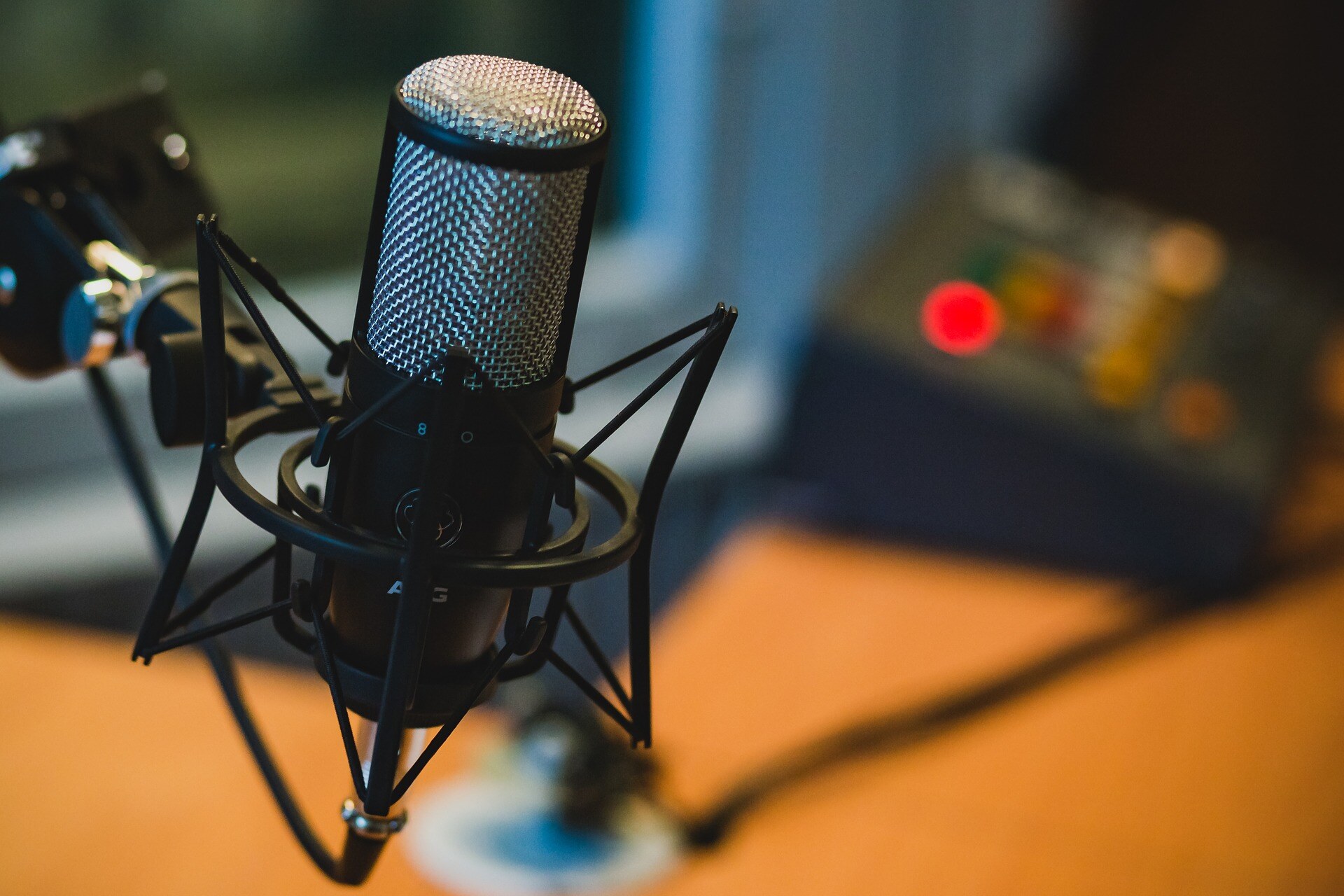
How a Podcast Can Boost Your Agricultural Marketing Efforts

Podcasts are a highly engaging, low-cost marketing technique that appeals to a broad demographic. If you are marketing to agri-businesses, farmers, and producers, audio content is one of the best ways to reach them where they live. Whether they’re in the field, on the tractor, or in the office, these folks are always on the go. Listening to podcasts is a productive way to pass the time and get the market information they need to stay on top of their game.
Media Marketing 101: Video & Audio Streaming
Why Podcasting is a Good Idea
In the never-ending effort to rise above the noise, podcasts are a way to carve out a niche, show your expertise, and provide entertainment—and value—to your customers at no cost to them.
You don’t need a lot of equipment to get going with podcasts. All you need is your expertise and authority; if you have these qualities, coming up with topics should be easy. With minimal investment in time and equipment, you’ll be landing exactly where you want to be in no time.
To fuel the engine, here are a few more benefits you can expect from podcasting:
- Answer customer questions to engage with topics they care about
- Establish your authority without selling
- Build brand awareness and trust
- Reach a wider audience
- High-value content to share and promote on all your channels
- Supports and adds value to your existing marketing campaigns
And don’t forget that podcasts and audio are probably the best way to reach an agriculture audience. They listen to audio programming on their mobile devices, in the truck, and on the tractor to gain insights into financial markets, new product and equipment innovations, legal matters, diversification strategies, and how political decisions impact the industry.
Getting Started: Podcasting Basics
As with any worthwhile endeavor, a little planning goes a long way.
Naming Your Podcast Series
Today’s ag business landscape is affected by so many variables. As a result, there is an almost endless list of subject matter and breaking news to choose from.
When you’re coming up with a name for your podcast, think about the topics that resonate most with your audience. The podcast title should reflect your value proposition, and it should show your personality. Make sure the niche is clearly conveyed. Cut to the chase, and be sure to use terms and phrases that are common in the industry. Be creative, but not cryptic. Think about your audience – what’s going to hook them?
How Long Should Your Podcast Be?
You might have an endless list of topics and talking points, but you want to aim for a length that allows you to get your point across without becoming tedious. Engagement is the ultimate goal. If you go on too long about a topic without adding value to it, you risk your audience clicking away.
While there are no hard-and-fast rules about how long a podcast should be, keeping it under 30 minutes should be a goal. If you have a solid 20 minutes of content, then keep it to 20 minutes. You’ll hear many opinions about the “ideal” podcast length, but take a moment to consider where and how your audience will listen. The one risk of it being too long is that the listener might need to stop and restart, which might affect how well your message sinks in.
Keep in mind that you don’t have to fit your episodes into a broadcast window, so even if the show lengths vary from episode to episode, that’s okay. If one is a little longer and the next one is a little shorter, it’s all good. The point is, make your time count for something. Have respect for your audience, and don’t waste their time by rehashing the same information just to fill the air. Aim to inform and entertain, and once you’ve made your point, maybe segue into a little teaser for the next episode. As they say in show business, always leave them wanting more!
Podcasting Equipment You’ll Need to Get Started
You don’t need much equipment to get rolling on your new podcast. Even if you want to purchase top-notch gear, it’s not a huge investment by any stretch. However, you do want to be sure you invest in a decent quality microphone. Relying on the internal mic on your computer might not be the best strategy.
The Basics
At the very minimum, you’ll need a USB microphone, an internet connection, and some editing software.
- Microphones. USB microphones are ideal because you can plug them directly into your computer without needing an interface. That said, be sure you have a USB connection on your computer, at least for when you’re recording. You’ll be able to edit on any device, as long as the software is compatible.
Here are a few suggestions for good quality podcasting microphones:
Samson Satellite. This mic is perfect for podcasting. You can use it with your iPhone or any computer with a USB connection. Lots of settings, good quality, and highly versatile. It’s about $100 and available from various resellers.
Blue Microphones makes a broad range of affordable, good-quality USB mics from about $100 to $200. They offer some pretty funky styles too—very space-age—so go ahead and have some fun with it. According to the company, the Blue Yeti and Blue Snowball are the most popular podcasting mics on the market.
- Editing Software. Opinions? Hands-down, Adobe Audition is probably the best value in editing software – and it’s all you will ever need. Audition is audio recording and mixing software made for motion picture and broadcast production, so it’s pro-quality, but so easy to learn and use, even for the luddites among us. Plus, if you have Adobe Creative Cloud, you already own it. If not, you can sign up for a subscription through Adobe for $20.99 monthly. Audition allows you to create multitrack sessions, so you can layer different types of audio. For example, if you have a pre-recorded segment you want to pull in or some music for the background, Audition makes it easy.
On the topic of music, there are plenty of sources for royalty-free music on the web, but you can also work a freelancer on Fiverr to create a piece of music that is unique to you. Using music you don’t have the rights to might cause your podcast to be taken down for royalty infringement.
Measuring Your Results
Like any good marketer, once your podcast is launched and people are listening, you’ll want to know if it’s working for you.
Sales ROI is only one metric you should be looking at, but it’s often the slowest to show any significant action, so don’t snap to judgment based on sales alone.
Here are some of the “other” numbers you should be concerned with to determine whether your podcast is hitting its mark:
- Number of listeners
- Number of downloads
- Engagement – comments, likes, shares, and reviews
- Podcast page traffic volumes
- Clicks and email open rates
- Conversions
Also, don’t forget that your podcast holds lasting value as its topics can be repurposed into other types of content. For example, you might create blog posts, social media posts, or videos based on your most popular podcasts. Best of all, it’s an excellent opportunity to cross-post on other channels and a way to build solid social proof.
Do you still have questions about getting started with podcasting? We’d love to help with strategy and set up of your podcast! Reach out today, and let’s start the conversation.
—
You may also be interested in:
Editor’s Picks
Many people are skeptical or even afraid of Artificial Intelligence (AI). But we've been using it to enhance our team and capabilities. The real...


Connect with us to discover how we can help your business grow.
.jpg)
